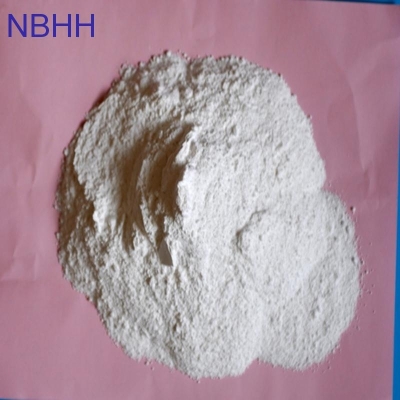-
Categories
-
Pharmaceutical Intermediates
-
Active Pharmaceutical Ingredients
-
Food Additives
- Industrial Coatings
- Agrochemicals
- Dyes and Pigments
- Surfactant
- Flavors and Fragrances
- Chemical Reagents
- Catalyst and Auxiliary
- Natural Products
- Inorganic Chemistry
-
Organic Chemistry
-
Biochemical Engineering
- Analytical Chemistry
-
Cosmetic Ingredient
- Water Treatment Chemical
-
Pharmaceutical Intermediates
Promotion
ECHEMI Mall
Wholesale
Weekly Price
Exhibition
News
-
Trade Service
The FAO Food Price Index averaged 118.
5 points in March 2021, an increase of 2.
4 points (2.
1%) from the previous month.
This marks the tenth consecutive month that the index has risen and has climbed to its highest level since June 2014.
The March index rise was mainly driven by strong increases in the foodmate.
net/tag_2394.
html" class="zdbq" title="Vegetable oil related food information" target="_blank">vegetable oil , foodmate.
net/tag_1499.
html" class="zdbq" title="Meat related food information" target="_blank">meat and foodmate.
net/tag_1528.
html" class="zdbq" title="Dairy related food information" target="_blank">dairy product indexes, while the foodmate.
net/tag_601.
html" class="zdbq" title="Cereal-related food information" target="_blank">cereal and foodmate.
net/tag_1821.
html" class="zdbq" title="Sugar-related food information" target="_blank">sugar indexes fell.
5 points in March 2021, an increase of 2.
4 points (2.
1%) from the previous month.
This marks the tenth consecutive month that the index has risen and has climbed to its highest level since June 2014.
The March index rise was mainly driven by strong increases in the foodmate.
net/tag_2394.
html" class="zdbq" title="Vegetable oil related food information" target="_blank">vegetable oil , foodmate.
net/tag_1499.
html" class="zdbq" title="Meat related food information" target="_blank">meat and foodmate.
net/tag_1528.
html" class="zdbq" title="Dairy related food information" target="_blank">dairy product indexes, while the foodmate.
net/tag_601.
html" class="zdbq" title="Cereal-related food information" target="_blank">cereal and foodmate.
net/tag_1821.
html" class="zdbq" title="Sugar-related food information" target="_blank">sugar indexes fell.
The FAO Grain Price Index averaged 123.
6 points in March, a decrease of 2.
2 points (1.
7%) from the previous month.
Although it reversed the eight-month consecutive rise, it was still 25.
9 points (26.
5%) higher than the previous year.
Among the major cereals, wheat export prices in March led the decline with a 2.
4% drop, still rising by 19.
5% year-on-year.
The month-on-month decline in wheat prices mainly reflects the overall good supply of food crops in 2021 and the optimistic outlook for production.
International corn and barley prices have also fallen, although China's continued strong import demand has restrained the decline from further expansion, while the increase in sorghum prices has run counter to the two.
After three months of steady growth, international rice prices fell slightly in March.
This was because new crops began to enter the market, while export demand for non-Japonica rice from all major producing areas except India remained weak.
6 points in March, a decrease of 2.
2 points (1.
7%) from the previous month.
Although it reversed the eight-month consecutive rise, it was still 25.
9 points (26.
5%) higher than the previous year.
Among the major cereals, wheat export prices in March led the decline with a 2.
4% drop, still rising by 19.
5% year-on-year.
The month-on-month decline in wheat prices mainly reflects the overall good supply of food crops in 2021 and the optimistic outlook for production.
International corn and barley prices have also fallen, although China's continued strong import demand has restrained the decline from further expansion, while the increase in sorghum prices has run counter to the two.
After three months of steady growth, international rice prices fell slightly in March.
This was because new crops began to enter the market, while export demand for non-Japonica rice from all major producing areas except India remained weak.
The FAO Vegetable Oil Price Index averaged 159.
2 points in March, an increase of 11.
8 points (8.
0%) from the previous month, and the highest level since June 2011.
Driven by rising prices of palm oil, soybean oil, rapeseed oil and sunflower oil, the index continued to strengthen.
Under the dual pull of major exporting countries’ concerns about tight inventories and the gradual rebound in global import demand, international palm oil prices have risen for the tenth consecutive month.
The sharp rise in soybean oil prices over the same period was largely supported by strong demand, especially the biodiesel sector.
The prices of rapeseed oil and sunflower oil are supported by long-term supply tightening in Canada and the Black Sea region, respectively.
2 points in March, an increase of 11.
8 points (8.
0%) from the previous month, and the highest level since June 2011.
Driven by rising prices of palm oil, soybean oil, rapeseed oil and sunflower oil, the index continued to strengthen.
Under the dual pull of major exporting countries’ concerns about tight inventories and the gradual rebound in global import demand, international palm oil prices have risen for the tenth consecutive month.
The sharp rise in soybean oil prices over the same period was largely supported by strong demand, especially the biodiesel sector.
The prices of rapeseed oil and sunflower oil are supported by long-term supply tightening in Canada and the Black Sea region, respectively.
The FAO Dairy Product Price Index averaged 117.
4 points in March, an increase of 4.
4 points (3.
9%) from the previous month, achieving a tenth consecutive increase and setting a year-on-year increase of nearly 16%.
The main reason for the increase in international butter prices in March was the slow rise in output at the beginning of the European milk season, and the increased demand for the recovery of the food service industry in Europe has led to a tightening of supply.
Supported by the increase in imports from Asia, especially China, coupled with the seasonal decline in milk production in Oceania and the scarcity of shipping container resources in Europe and North America, the price of milk powder has also risen.
In contrast, due to limited demand for spot supplies, cheese prices fell slightly for the third consecutive month.
4 points in March, an increase of 4.
4 points (3.
9%) from the previous month, achieving a tenth consecutive increase and setting a year-on-year increase of nearly 16%.
The main reason for the increase in international butter prices in March was the slow rise in output at the beginning of the European milk season, and the increased demand for the recovery of the food service industry in Europe has led to a tightening of supply.
Supported by the increase in imports from Asia, especially China, coupled with the seasonal decline in milk production in Oceania and the scarcity of shipping container resources in Europe and North America, the price of milk powder has also risen.
In contrast, due to limited demand for spot supplies, cheese prices fell slightly for the third consecutive month.
The FAO Meat Price Index* averaged 98.
9 points in March, an increase of 2.
2 points (2.
3%) from the previous month, maintaining an upward trend for the sixth consecutive month, but still a slight decrease (0.
5%) year-on-year.
The rapid increase in imports from Asian countries (mainly China) has driven up the quotations of poultry and pork.
The upcoming Easter celebrations have led to a surge in sales within Europe and also supported pork prices.
As prices from Brazil and the United States increased to offset the decline in Australian export prices, beef prices remained stable, close to their February levels.
In contrast, the price of lamb fell due to the increase in supply from New Zealand, because the widespread dry weather made farmers choose to sell their sheep earlier.
9 points in March, an increase of 2.
2 points (2.
3%) from the previous month, maintaining an upward trend for the sixth consecutive month, but still a slight decrease (0.
5%) year-on-year.
The rapid increase in imports from Asian countries (mainly China) has driven up the quotations of poultry and pork.
The upcoming Easter celebrations have led to a surge in sales within Europe and also supported pork prices.
As prices from Brazil and the United States increased to offset the decline in Australian export prices, beef prices remained stable, close to their February levels.
In contrast, the price of lamb fell due to the increase in supply from New Zealand, because the widespread dry weather made farmers choose to sell their sheep earlier.
The FAO Sugar Price Index averaged 96.
2 points in March, a decrease of 4 points (4.
0%) from the previous month, and it fell for the first time after rising sharply in the previous two months.
However, fears of tight global supply in 2020/21 will still increase sugar quotations by more than 30% year-on-year.
The decline in international sugar prices in March was triggered by the prospect of India's recent large-scale exports, although logistics restrictions have not yet been lifted.
In particular, strong import demand represented by China has put upward pressure on prices, while the rise in crude oil quotations has inhibited further sharp declines in quotations in recent weeks.
2 points in March, a decrease of 4 points (4.
0%) from the previous month, and it fell for the first time after rising sharply in the previous two months.
However, fears of tight global supply in 2020/21 will still increase sugar quotations by more than 30% year-on-year.
The decline in international sugar prices in March was triggered by the prospect of India's recent large-scale exports, although logistics restrictions have not yet been lifted.
In particular, strong import demand represented by China has put upward pressure on prices, while the rise in crude oil quotations has inhibited further sharp declines in quotations in recent weeks.
* Unlike other commodity categories, when the FAO Food Price Index is calculated and released, most of the prices used to calculate the FAO Meat Price Index are still uncertain; therefore, the meat price index in recent months is a comprehensive forecast price And the actual price.
This sometimes requires significant adjustments to the FAO Meat Price Index to arrive at the final figure, which in turn may have an impact on the FAO Food Price Index.
This sometimes requires significant adjustments to the FAO Meat Price Index to arrive at the final figure, which in turn may have an impact on the FAO Food Price Index.







